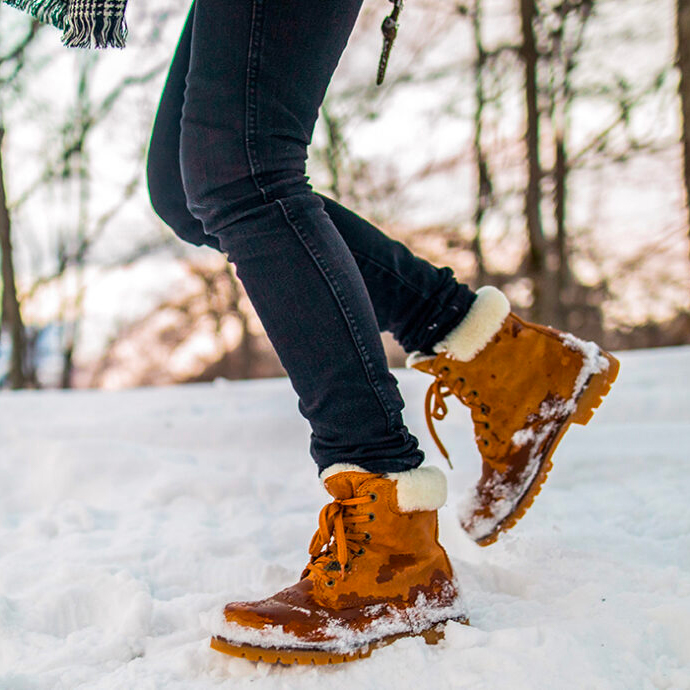What you need to know to reduce your risk

Healthy Living
Every November we dig out our gloves, toques and scarfs and get ready for old man winter. Some prefer to hibernate inside while others embrace the winter wonderland. As Canadians, our everyday language is filled with expressions that reference our wintery climate: Skating on thin ice, snowed under, leave him out in the cold and not a snowball’s chance. My grandpa liked to say Manitoba winters build character, making people heartier, and I would have to agree with him. After all, folks who live on the west coast just get up in the morning and start their day, never having to dig out a car from a snow drift! If winter can teach us anything, it’s patience. There is a downside however – winter also brings with it treacherous, icy conditions that can increase your risk of a fall.

November is fall prevention month, the perfect time to learn how to reduce your risk of falling in winter. Even simple activities like walking to your car or grabbing the flyers from the mailbox can be hazardous on our icy roads and sidewalks. Falls are a major threat to the health and well-being of older adults and one in three adults aged 65+ will fall each year. According to the latest stats from the Canadian Institute for Health Information, there were almost 9,000 hospitalizations due to falls on ice, making them the number one reason people get hurt in winter. A serious fall on the ice can result in a debilitating injury and a long-term recovery – this especially holds true for older adults.
But it’s not all bad news! Falls CAN be prevented with some simple, common sense strategies so you can continue to stay active and enjoy the winter months. Here are a few things to keep in mind as the temperatures drop:
• Wear proper footwear: Good traction on snow and ice is your best defense when walking outside. Make sure your winter footwear has a sturdy sole, is well insulated, waterproof and has a good traction grip. If you’re not sure about the tread on your boots, there’s a website for that! Visit http://www.ratemytreads.com/ for more information.
• Slow down and take it easy: It may seem like a simple strategy but being in a hurry and walking too fast can contribute to a fall. If you use a cane, you can also add a retractable ice tip for a firm grip on the snow. Other safe outdoor walking strategies include using caution in high risk areas like going up or down stairs, stepping over curbs, or carrying items like grocery bags when navigating an uneven, icy surface. And perhaps most importantly, pay attention at all times!
• Eat well: According to the Staying on your Feet website from the Winnipeg Regional Health Authority, “Eating a healthy and balanced diet helps you feel good, keeps your bones and muscles strong and can prevent long term health conditions.” This also includes an adequate intake of Vitamin D, which helps your body absorb calcium and keeps your bones strong. The website recommends a daily supplement of 1,000 IU (international units) vitamin D3. Please check in with your healthcare provider prior to taking any over the counter supplements.
• Be prepared: You may also want to consider a mobile personal help button in case of an accidental fall or emergency so you can access help quickly. Recognizing that older adults today lead active lives, Victoria Lifeline’s GoSafe mobile service has fall detection and six advanced location technologies built right into the button, giving subscribers the confidence to continue doing all the things they love. For more information on GoSafe or to watch a video on how the service works, please visit victorialifeline.ca. Please note that GoSafe relies on a cellular network connection.
Krystal Stokes is the communications and public relations manager at Victoria Lifeline, a community service of the Victoria General Hospital Foundation.

